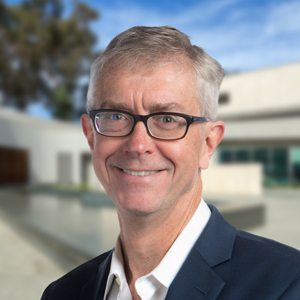Source: Interfolio F180

James Williamson, PhD
Scripps Research Joint Appointments
Research Focus
RNA Structure and RNP-Assembly.
The goal of my research program is to understand the structural role of RNA in mediating its many biological functions. We are interested in the 3-dimensional architecture of RNA, recognition of RNA by proteins, and the process by which RNAs fold into their complex structures. Experimentally, we apply a wide range of biochemical and biophysical methods to characterize specific model systems to obtain insights into how RNA structure contributes to RNA function.
Ribosome Assembly. We are using a multidisciplinary approach to study the dynamics of ribosome assembly, both in vitro and in cells. In order to measure the kinetics of ribosomal protein binding in vitro, we developed an isotope pulse-chase method using quantitative mass spectrometry. This approach allows us to measure the rate of ribosomal protein binding under a variety of conditions to interrogate the mechanism of assembly. In addition, we are using single molecule fluoresence methods, in collaboration with David Millar's laboratory, to measure cooperativity in ribosome protein binding using Fluorescence Correlation Spectrocopy. We are collaboratting with Clint Potter, Bridget Carragher and Ron Milligan's laboratory to determine the structure of ribosome assembly intermediates using time-resolved electron microscopy. Finally, we are using isotope pulse experiments in conjunction with quantitative proteomic mass spectrometry to monitor the dynamics of ribosome assembly in cells.
RNPs regulating C. elegans germline development. We are using a biochemical and structural biology approach to determine the structure of RNA-protein complexes that regulate stem cell differentiation in the model organism C. elegans. RNA binding proteins regulate many essential genes in this process by binding to 3'untranslated regions of the mRNA. We are using X-ray crystallography to determine the structures of these multicomponent ribonucleoprotein complexes to learn how they regulate gene expression.
Regulation of T-cell activation by RNA binding proteins. We are collaborating with Dan Salomon's laboratory to study how RNA binding proteins regulation the activation of T-cells. We are using a structural genomics approach to determine the structure of RNA binding proteins, protein-protein complexes, and RNA-protein complexes that are implicated in regulating T-cell activation.
Helicases involved in HIV Replication. We are studying a set of helicases that are implicated in the function of the HIV Rev protein, which is important for transport of unspliced viral mRNAs from the nucleus to the cytoplasm. Helicases are ATP-dependent RNA binding motors that are implicated in strand displacement and protein displacement reactions in many cellular processes, however, their specific role in HIV replication is not known. We are taking a biochemical and X-ray crystallographic approach to understand how these helicases participate in key steps of the life cycle of HIV.
Education
B.S. (Chemistry), Mount Union College, 1981Ph.D. (Chemistry), Stanford University, 1988
Professional Experience
1997-present Professor. Department of Integrative Structural and Chemical Biology, TSRI2015-present Executive Vice President. Research and Academic Affairs, TSRI
2008-2017 Dean of Graduate and Postdoctoral Studies. The Kellogg School of Science and Technology, TSRI
1995-1997 Associate Professor. Department of Chemistry, Massachusetts Institute of Technology
1990-1995 Assistant Professor. Department of Chemistry, Massachusetts Institute of Technology
1988-1990 Postdoctoral Fellow. Laboratory of Dr. Thomas R. Cech, University of Colorado
1983-1988 Graduate Student. Ph.D. 1988 in Laboratory Dr. Steven G. Boxer, Stanford University
1981-1983 Graduate Student. Laboratory of Dr. Michael C. Pirrung
1978-1981 B.S. in Chemistry, Mount Union College, Alliance OH
Awards & Professional Activities
1980 Alpha Lambda Delta Chemistry Honorary, Mount Union CollegeOutstanding Junior Chemistry Major, Mount Union College
1981 Graduation with Honors in Chemistry and General Honors, Stanford University
1981 Outstanding Senior Chemistry Major, Stanford University
1988 Postdoctoral Fellowship, The Jane Coffin Childs Memorial Fund for Medical Research
1995 Camille Dreyfus Teacher-Scholar Award, The Camille & Henry Dreyfus Foundation
1995 Alfred P. Sloan Fellow, Alfred P. Sloan Foundation
1994 Rita Allen Scholar Award, Rita Allen Foundation
1991 Searle Scholar Award, Searle Scholars Program/Kinship Foundation
1991 Pfizer-Laubach Career Development Professorship, Massachusetts Institute of Technology (MIT)
2010 Honorary Member, American Academy of Arts and Sciences
2022 Honorary Member, National Academy of Sciences
Selected Publications
Mulder, Anke M.; Yoshioka, Craig K.; Beck, A. H.; Bunner, Anne E.; Milligan, Ronald A.; Potter, Clinton S.; Carragher, Bridget O.; Williamson, James R. Visualizing ribosome biogenesis: parallel assembly pathways for the 30S subunit. Science 2010, 330, 673-677.
[View]
Bunner, Anne E.; Beck, A. H.; Williamson, James R. Kinetic cooperativity in Escherichia coli 30S ribosomal subunit reconstitution reveals additional complexity in the assembly landscape. Proceedings of the National Academy of Sciences of the United States of America 2010, 107, 5417-5422.
[View]
Beuck, C.; Szymczyna, B. R.; Kerkow, Donald E.; Carmel, A. B.; Columbus, L.; Stanfield, Robyn L.; Williamson, James R. Structure of the GLD-1 homodimerization domain: insights into STAR protein-mediated translational regulation. Structure 2010, 18, 377-389.
[View]
Szymczyna, B. R.; Taurog, R. E.; Young, M. J.; Snyder, J. C.; Johnson, John E.; Williamson, James R. Synergy of NMR, computation, and x-ray crystallography for structural biology. Structure 2009, 17, 499-507.
[View]
Talkington, Megan W.; Siuzdak, Gary; Williamson, James R. An assembly landscape for the 30S ribosomal subunit. 2005, 438, 628-32.

